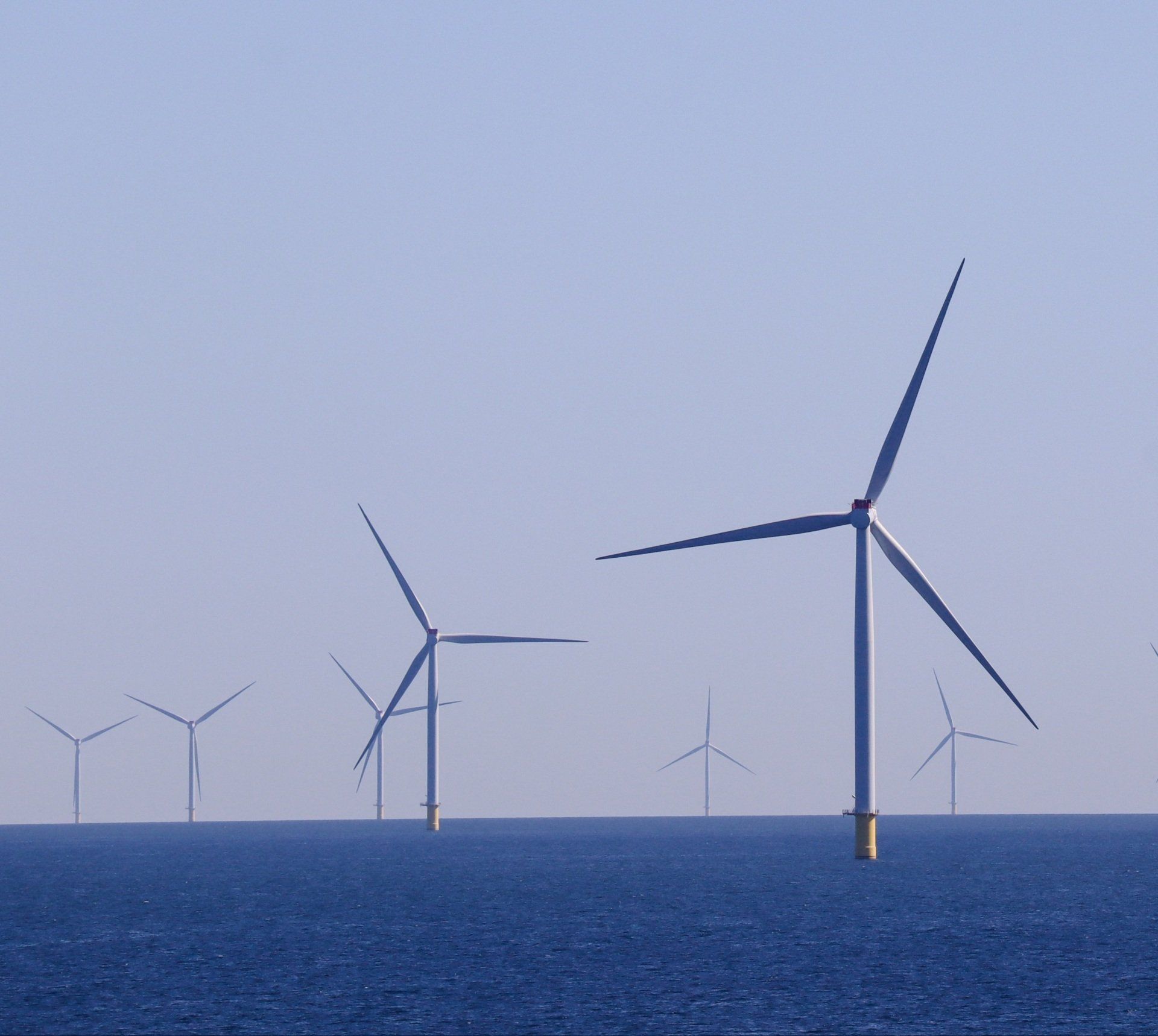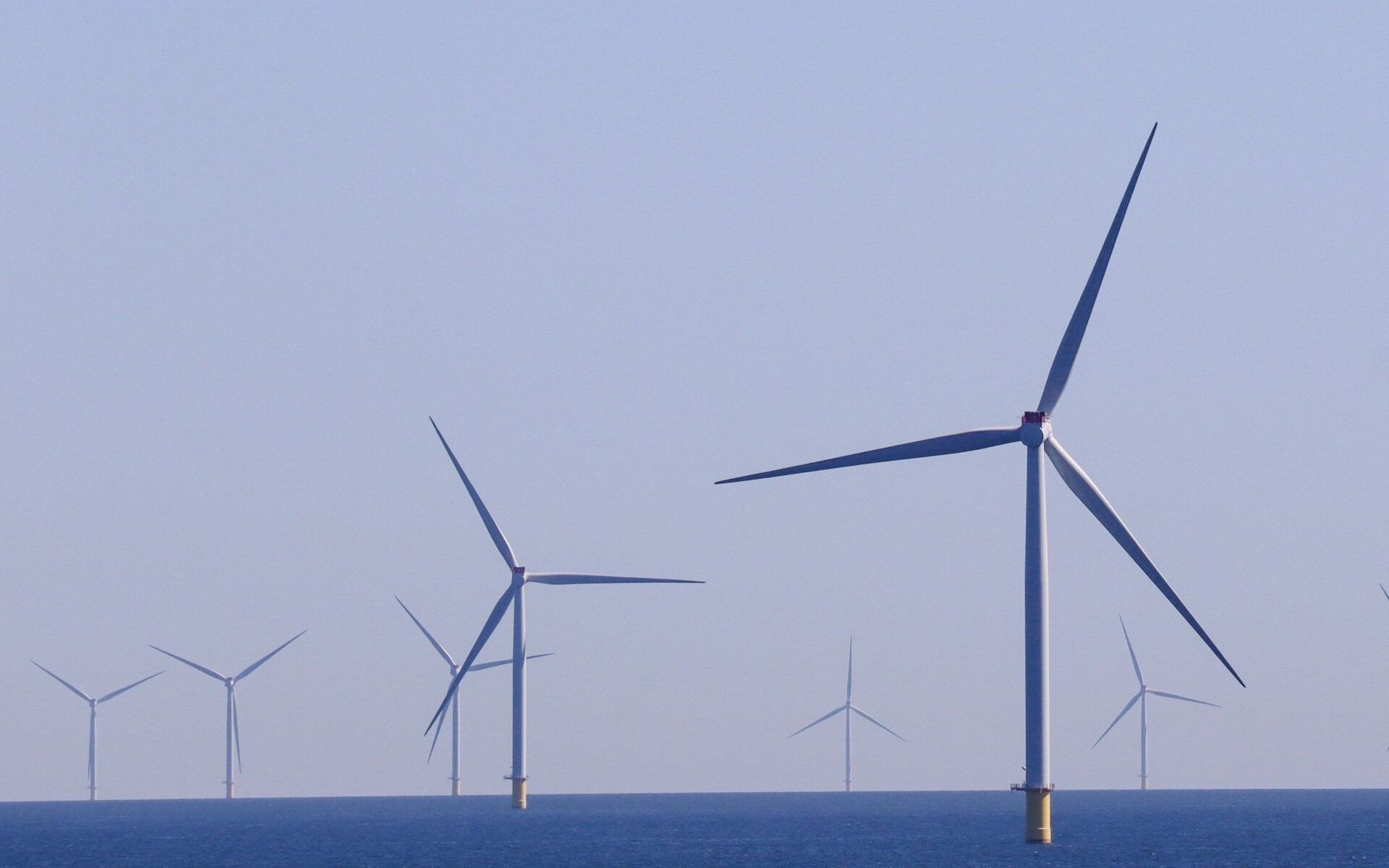EcoPerspectives Blog
Still Fiddling, At 100 Seconds to Midnight, As the World Warms, Floods and Burns: Oceans’ Survival Need Faster Siting and Transmission of Offshore Wind Farm Projects
By Jeff Thaler, Esq.
November 15, 2022

Thomas Edison in 1931: “We are like tenant farmers chopping down the fence around our house for fuel when we should be using Nature’s inexhaustible sources of energy — sun, wind, and tide.” Then Jeff Thaler in 2012: “In an increasingly carbon- constrained world, our existing environmental laws and regulatory process no longer achieve their underlying goals of long-term ecosystem conservation. We have little time left to create a practical path to achieving an 80% reduction in greenhouse gases by 2050.” But today, it’s 100 seconds to midnight: “For over four decades the threat of climate change to “future generations” has been ruefully noted. Today’s young people are increasingly seeing themselves as the future victims.”
While there has been recent progress on clean energy development issues, even with the recent $369 billion Inflation Reduction Act (IRA), there still is not enough urgent focus on more implementing within weeks, not months or years, effective and expeditious government initiatives for the siting, leasing and permitting of offshore clean energy projects, especially offshore wind (OSW), and the needed transmission infrastructure for their energy. Indeed, at a Sept. 30,2022 Boston forum, the Chairs of FERC and the Massachusetts DPU agreed that a) the status quo is not working; b) siting and permitting are the Achilles heels to get to the 2-3 times the existing transmission system needed to adequately electrify; c) climate change is driving planning at federal and state utility levels, and d) the cost of NOT doing a clean energy project is “massive”.
Yetclimate change impacts are outpacing development of projects to reduce fossil fuel consumption. Since my 2012 “Fiddling as the World Floods and Burns” warnings, ocean acidity levels continue to increase faster than at any known time in Earth’s past; sea level rise has accelerated with a 233% increase in tidal flooding in the U.S.; atmospheric CO2 levels peaked in 2022 at 421 ppm, a first in millions of years; since January 1, 56,586+ wildfires have burned 6,945,665+ acres in the US; extreme rainfall and weather events are much more common, costly and deadly, fueled by climate-related disasters jumping 83%.
New England States have set ambitious goals of reducing greenhouse gas emissions 80% by 2050, as have many Atlantic states for future OSW generation goalsyet still have only one, small operating offshore energy project, and an inadequate transmission grid. IRA was passed, but then the Manchin energy project streamlining legislation never had a hearing.
What must be done, and why?
Why is IRA not enough? It did extend and expand the Investment and Production Tax Credits (ITC PTC) for, in part, OSW, but projects must begin construction by January 1, 2025. The credits will then be replaced by the Clean Electricity Investment Credit, and the Clean Electricity Production Credit, which will phase out in 2032 or once the electric power sector emits 75% less carbon than 2022 levels, whichever comes later.[AW5] All four credits provide bonuses for OSW projects using methods providing additional social benefits: the Prevailing Wage Requirement; the Apprenticeship Requirement, a Domestic Content requirement, and projects in designated “energy communities,” (brownfield sites or elevated unemployment and historic employment in the fossil fuel industry.
Progress, butIRA does little for expediting siting of OSW projects and transmission of their output. One provision, Section 50265, ties for 10 years offshore wind project leasing by the Bureau of Ocean Energy Management to leasing millions of acres for offshore oil and gas production. Another portion provides a relatively small (in the millions, not billions) amount for grants to state, local or Tribal government entities with authority over siting, permitting, or regulating high-voltage interstate or offshore transmission lines, for studying the impacts of proposed transmission projects; evaluating alternative corridors; and participating in projects’ federal or state regulatory proceedingsbut is vague on timelines for action.
IRA also provides $100 million to fund a planning body to analyze interregional electricity transmission and transmission infrastructure for OSW projects. Yet already there is the federal Atlantic Offshore Wind Transmission Study to evaluate coordinated transmission solutions to enable offshore wind energy deployment along the U.S. Atlantic Coastbut spread out over two years, not to be completed until October 30, 2023. Too slow.
Why is OSW, especially with floating platforms, so critical to meeting urgent climate goals and needs? First, 80% of offshore wind resources are in waters greater than 60 meters; eight of the top 10 largest cities in the world are located by the coast, as are 15 of the 23 Megacities (>10 million size); and 45+% of the world’s population live within 150 kilometers of the coast.
Second, per NREL (Walt Musial) at a September conference in Maine, floating OSW enables sites farther from shore, out of sight, with better winds; fixed bottom ocean space is becoming scarcer; and there are no inherent cost drivers/premiums to make floating more expensive than fixed bottom wind energy.
Third, the Biden Administration announced in September a goal of deploying 15 GW of floating offshore wind capacity by 2035 with a 75% cost reduction to 4.5cents/kWhwhereas today the closest floating project to being built is the 11-MW Monhegan project in Maine (for which I have been legal counsel since inception), with completion in 2025, which is why more must be done to achieve those goals than IRA, or more and more studies and delay. Indeed, the Gulf of Maine has a vast offshore wind energy capacity with a technical potential of more than 156 GW of clean energy generationbut BOEM’s current offshore OSW leasing process timeline, from planning through construction and operation inception is about 10 years.
This needs to be cut by 50-75% to keep up. How?
Looking forward, ironically specific recommendations that I made in 2012 are eerily very similar to what Senator Manchin proposed in 2022but still must be legislated and, if need be, implement by Executive Orders, promptly: 1) Prioritize and streamline the regulatory review of renewable energy projects by proclaiming in NEPA and other environmental statutes (including BOEM leasing) that quickly building significant numbers of ORE projects is of great strategic importance; 2) Establish clear, expedited timelines for agency review and consultation, as well as any judicial review of agency decisions; 3) Expand use of NEPA categorical exclusions for OSW demonstration and small-scale projects; and 4) Require that the “hidden” costs of fossil-fueled energy be considered, along with the comparative life cycle impacts of competing energy sources, as part of NEPA’s no-action alternative analysis.
Next, using my 2014 analysis on how to use the public trust doctrine (PTD) and a “green thumb” on cost/benefit scales to expedite ocean renewable energy projects (ORE) like OSW, acknowledge that climate change continues to significantly impact public trust resources, and threatening the traditional public trust values of navigation, commerce, and fishing in and on navigable and tidal waters and the lands beneath. Thus, given legal support for the expansion of PTD infused with ORE values to both federal and state trust waters and lands, I recommend that the President, Senator Manchin and others work from the draft legislative concept I provided giving preference for ORE in the context of permitting, regulatory, and judicial review with a statutory and regulatory rebuttable presumption in favor of ORE over other trust values, because of ORE’s ability to mitigate the adverse impacts of climate change.
While “money talks“and $369 billion from IRA has caused a lot of talkingCongress, agencies, regional transmission operators, State Legislatures and Utility Commissions, environmental NGOs and others all must work to more aggressively transition to an electrified heating, transportation and industrial world powered by clean energy sources. Given 1) the severe limitations for any sizeable hydropower projects; 2) transmission distance and visual impact issues for any sizable growth of onshore wind generation; 3) growing concerns about the footprint of grid-scale and even smaller solar projects; and 4) the huge potential for offshore wind generation close to major population centers that can be placed with floating technology away from any significant visual or wildlife impacts while avoiding many visible miles of new above-ground transmission lines to shorefor us to keep the Doomsday Clock from moving below 100 seconds (indeed to start reversing its recent trend) and to slow the oceans’ warming, acidifying and rising trends, we must all start today advocating for the faster siting of offshore wind projects and of the needed transmission capacity for their output.

